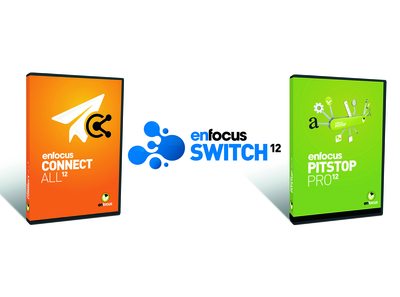Enfocus took the time to update printers on its latest software developments, as well as general PDF development and other workflow-enhancing tools in London’s jewellery quarter.
Hatton Garden, the centre of the UK’s diamond trade, was the location for an autumn seminar held by Enfocus in October, with around 25 delegates from UK print businesses hoping to unearth some priceless workflow gems, in attendance.
The event preceded by a single day the release of information concerning the latest update to PitStop 12, Enfocus’s PDF preflight and editing software, much used through the printing industry. Attendees therefore had a day’s grace on the rest of the industry to dwell upon the new automatic colour bar generating function, tools for proportional resizing, enhanced colour mapping from Grey to CMYK, and support for OS X Yosemite.
This was only the latest in a long line of product launches and updates from Enfocus this year, proof if it were needed that printers are still very much looking to software to scratch a few more units of efficiency out of their businesses. The Switch 12 workflow system was launched at the start of the year, followed by Connect 12, a software product that allows users to create ‘Connectors’, little applets that can be configured to quickly perform tasks such as creating, preflighting and sending PDFs. Updates for PitStop, Switch and Connect have followed as the year has progressed.
Naturally, there was a good deal of nitty-gritty of specific features of these software systems, such as learning how Switch can be used with metadata, how it can integrate with a database, and how it can be used to take advantage of Command Line options. Space precludes this article from dealing in such detail, but it may be of interest to readers to consider using Command Line options as a resource-conscious (in terms of CPU and RAM) way to automate workflow processes. There are literally thousands of them in existence.
PDF progress
In terms of the bigger picture, Andrew Bailes-Collins, senior product manager for the PitStop product family, imparted some interesting information in respect of general PDF development during his presentation on the evolution of PitStop.
Currently, the versions of PDF that are at the coal face of use in the print sector are PDF 1.3 and 1.6. The most commonly used file types in the print industry are PDF/X-1a (using PDF 1.3) and PDF/X-4 (PDF 1.6). PDF/X-4 allows live transparency and layers. These are not processed until they go through the RIP, and Mr Bailes-Collins said that rendering in-RIP and going straight to bitmap is actually much easier than flattening a PDF. The result is higher quality, the preservation of the ability to edit, no unnecessary object conversion, and colour managed PDFs.
The PDF specification does not stand still though. ISO took over the development of PDF from Adobe in 2008, publishing the existing specification of the file format as ISO 32000-1. Other than subsets such as PDF/X and the variable data format PDF/VT, little of note for the print sector has been forthcoming since ISO took responsibility for development. Early in 2016, however, PDF 2.0 is due to be published as ISO 32000-2 – the first update to the PDF specification developed entirely within the ISO Committee process. According to Mr Bailes-Collins, there are some quite interesting things in PDF 2.0, even though print is not actually in the top six markets that Adobe addresses with Acrobat. ‘It is designed for secretaries, that’s why it looks the way it does now,’ he said.
PDF 2.0 will have an improved transparency model and standardised black point compensation in colour management; output intents can be specified at page level instead of document level, ink lay down order can be specified, and spot colour measurement data will use CxF, X-Rite’s new colour exchange format. This describes colour by spectral information, so taking into account things such as the substrate. All this can be embedded into the PDF 2.0 file.
Mr Bailes-Collins also gave a quick plug to the Ghent Workgroup Output Suite (he is a co-chair of the group). The Output Suite is a series of patches that users can process through their workflow to determine whether the workflow is behaving as it should. The patches are free and available from the Ghent Workgroup website (www.gwg.org).
There were two more little nuggets for delegates to consider. Firstly, PitStop Font Fix, a free Acrobat plug-in that is contained within PitStop 12, but for those with earlier versions is now downloadable from Enfocus (you just have to tweet your download!). It checks for missing fonts in PDF files, allows local available missing fonts to be embedded, and any additional fonts can be downloaded from the Monotype Cloud Server. There was also some awareness-raising by HP of the Switch configurators that exist for its SmartStream software that can help to automate a great many processes in production management, and the creation and submission of jobs.





